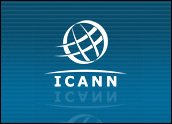
ICANN, the Internet naming authority, is up against the wall. It may simply drop its greatest revolutionary idea of offering a brand new type of designer domain name to accommodate the cyberrealities of the widely expanded Internet of tomorrow.
This new proposed platform would surely revolutionize marketing and branding for big and small businesses around the world, offering more highly affordable tools for global reach than ever before — but there are strong opponents who would like to kill this idea. Following are five reasons ICANN may abandon its plan.
1) Fear of rejection. For some strange reason, Internet practitioners and the domain registrar community of the world have not expressed their full and open support. This may be partially due to a serious lack of understanding of the global business of nomenclature and the complexities of cyberbranding.
Historically speaking, the original concept of the first five suffixes — like “.com” or “.net,” most probably drawn up on the back of a napkin — has proven one thing. Until now, .com has been the king, and all the others suffixes have struggled. Suddenly, the unlimited issuance of suffixes of choice becomes a shocker.
Internet registrars with a suffix-driven registration mentality are quite right in expecting that the importance of their existing suffixes will seriously shrink. However, a soon-to-be-released study by ABC Namebank points to the law of usability, which dictates that these new domains are not about suffixes. Rather, these are domain names without suffixes.
The future is all about name-driven domain identities over suffix-driven domain identities, and the lack of corporate understanding of nomenclature on a global scale is the proof. Imagine a city phonebook and yellow pages under a suffix system. One hundred phone books, anyone?
The study also notes that the number of new applications under the new platform will be so large that it will totally re-energize Internet support services, due to the requirements of registering and managing all the new sets of domain names.
2) Lack of credibility. There’s a high level of confusion among trademark professionals and attorneys worldwide, who are aggressively exploring their particular role in the process. Many are concerned about serious risks to trademark holders and increased cybersquatting.
The trademark profession justifiably recognizes three critical issues. First, there is the availability, suitability and registrability of any proposed name application under the common law. The traditional trademark process has provided progressive jurisdictional approval over years; now, in one single stroke, it is suddenly correlated to a new process of global cybername branding. Second, there are the court challenges between newly recognized cyberbrands and traditionally filed brands. Third, there arethe serious limitations on already-approved trademarked names, filed in regions in their own classification, which would fail on a new single-classification platform that would permit only one name to exist.
The ABC Namebank study points to a 95 percent dilution factor among major business names around the world and notes that this cyberbranding race will create havoc for those aggressively filed but poorly crafted brand names.
For some weird and mysterious reasons, most medium- and large-size business names all over the world are badly structured and cannot pass the global test on this new platform. However, the exposure of this blunt fact should not become a prime reason for opposing the change. Rather, this creates a great opportunity as a fix for real global image expansion. Irrespective of any other points in the debate, it will be a real big-bang era for the trademark and legal professions, as they are poised to play a very big role.
3) Complete absence of enthusiastic marketing industry support.Marketing professionals, branding experts and advertising agents — a couple of million people worldwide — are oblivious to this tsunami. They have yet to discover what this revolutionary scheme can deliver at a global scale, at a price less than the production cost of a single TV commercial.
The massive shrinkage in the global advertising and branding industry that’s already underway, due to digitization, will eventually level off with these new cyberplatforms. For now, some fast-track education is needed to re-energize the entire industry. The sheer volume of business generated by rebranding, renaming and repositioning initiatives would open extraordinary new fronts.
4) Outright rejection. The domain name protection agencies, which provide the service of filing millions of domain names to scare off cybersquatters, may become redundant.
The ease of entry to a domain name purchase really spread the disease of cybersquatting, but with a proposed price tag of US$200,000 to $500,000 for each name, plus a rigorous and complex application process, the midnight trains of mysterious squatters would simply be shunted to other tracks.
Furthermore, once a new gTLD name is allotted to a party, it would be very naive to assume that ICANN would allow several modified versions of the same name to be sold to others. The brand protection agencies would have far too many other new fronts to explore, and they might have to focus on issues besides squatting.
5) Lack of a powerful message. The important issues need to be articulated to the global entrepreneurial audience with swift speed, utilizing the latest technologies of mass communication. This needs to be a highly visible global business debate.
This arena could be the mother of all online activity, where brand new ideas will incubate and the dynamics of the new platform will shine. With a billion additional users on the way, the endless horizon will change, and a new level of global interaction will create a very rich Internet experience.
The media have paid little attention to this subject. It is still relegated to the IT columns of specialized publications and has yet to make front-page breaking news — as might be the case if Paris Hilton, for example, should throw a tantrum and demand her exclusive global rights to both of the new global domain names “.paris” and “.hilton” at any price, or else. Are we really waiting for a parade of the paparazzi to highlight this important issue?
The world’s business community needs a quick educational pill to cure the clash between techno-babble and sing-song-slogans, creating a clear and a very rich message that will not only add the value and power to this new platform but also bring it to the center stage.
For now, should ICANN drop the idea? No, never. If it should do so, nothing really would change for a while, but sooner or later, somehow, a group of new countries would claim true ownership of the Internet and set up a global body to meet the worldly challenges of tomorrow.
While the above-mentioned fears may be strong, the global business community critically needs market expansion to survive, and this platform offers some key solutions. For that reason alone — and without delay — the future must arrive today.
Fire up your engines, ICANN.
Naseem Javed is recognized as a world authority on corporate image and global cyber-branding. Author of Naming for Power, he introduced the Laws of Corporate Naming in the 1980s and also foundedABC Namebank, a consultancy established in New York and Toronto a quarter century ago. He can be reached at[email protected].











































Promateus:
Since you completely missed the mark on my last post, allow me to clear something up for you. I AM not beating the drum for major trademark owners or lobbying for the INTA. For the life of me, I have no idea how you arrived at that assumption and it says much more about your mindset than mine.
Let’s discuss the dotTravel saga. The people hyping the "public demand" for gTLDs run like cockroaches whenever dotTravel is discussed. DotTravel was an example of a potentially great gTLD with a killer generic word, tons of financing and little competition to boot. And it died. DotSport anyone? The bottom line is that the only people clamoring for these new gTLDs are those who would immediately profit – ICANN, registrars and domain speculators. Few of them will be developed and a high percentage of development is the litmus test for the success of any TLD.
Your argument of authority is meaningless. You invoke the founder of the WWW. In the referenced piece you submit, Berners-Lee says, rather unconvincingly, that the .mobi TLD is a disruptive idea. His title furthermore claims that .xxx would be disruptive but this is only alluded to, not developped. It should be noted also that he is very clear about making an argument specifically about the .mobi.
It seems to me that you are beating the drum of major trademark owners, as if you were a lobbying from INTA. Let it be clear, the only substantial argument against opening up the TLD space is the one that relate to the cost of "protecting trademark" accross an ever growing namespace. It is an old argument. It pre-dates the MoUvement.
Let me invoke the (co)founder and main politcal architect of the DNS, Jon Postel. I think my argument of authority trump yours any day of the week. He faced such trademark lobby opposition numerous times. His position was always that domain names should not be encaged by trademark law, and that a trademark holder should "brand" and "marketize" the domain names they chose, rather than reserve and/or reverse highjack all confusingly similar alphanumerical string. You like UDRP? (Read Geist quantitative analysis: fair.com) I don’t. If Postel would have had his way, there would be no need for a UDRP. Or in any case it would have been very different.
ICANN and registrars wants those TLDs you say, no, good public policy wants those TLDs.
Naseem Javed keeps banging the drum for this as if he were an ICANN lobbyist. What he fails to reveal is that the vast majority of the "demand" for these new TLDs is coming from ICANN, registrars and domain speculators – the people who would immediately profit from this boondoggle. In fact, there has been very little, if any, actual public demand for these new TLDs.
The founder of the word wide web, Tim Berners-Lee, wrote a paper in 2004 explaining why the addition of more TLDs would have a catastrophic effect on the Internet. His predictions still hold true today: http://www.w3.org/DesignIssues/TLD